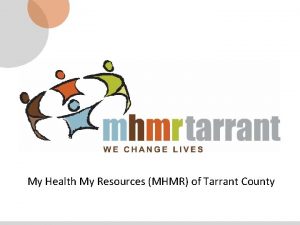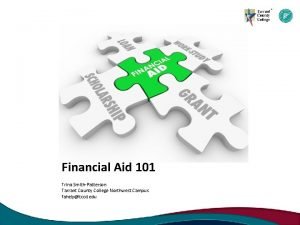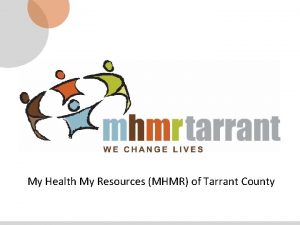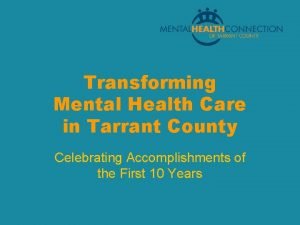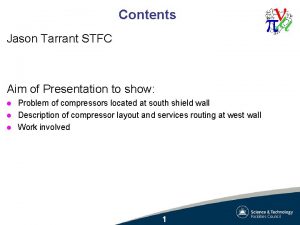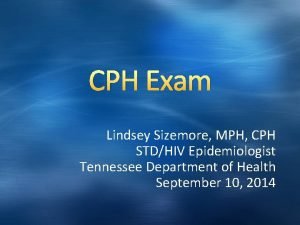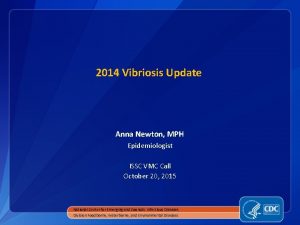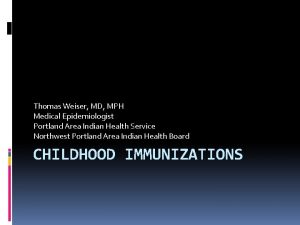Tarrant County Diana Cervantes MS MPH Epidemiologist Tarrant











- Slides: 11

Tarrant County Diana Cervantes, MS, MPH Epidemiologist Tarrant County Public Health

Tarrant County: • ~ 1. 8 million citizens • Ecology – Forrest to grassland prairies – Urban to rural • Culture – Very little history of mosquito spraying • WNV response began in 2002 – Mosquito surveillance/testing (2003) – Focus on surveillance and prevention • awareness and education

60 3, 5 50 3 Cases Number of cases 40 Rate 2, 5 2 30 1, 5 20 1 10 0, 5 0 0 2002 2003 2004 2005 2006 2007 2008 2009 2010 Year WNV associated mortality: 1 in 2002; 7 in 2006; 3 in 2009 2011 Incidence Rate per 100, 000 population Historical WNV Human Case Data Tarrant County, 2002 -2011

2012 Human case counts in Tarrant County* • Total cases: 279 – WNF -178 – WNND - 101 – Deaths - 11 • Incidence rate per 100, 000: 14. 5 • Cities with cases - 24 *For 2012 Arboviral season; Based on data reported as of 5: 00 PM 02/22/2013

WNV Cases by Onset of Illness, Tarrant County, 2012 Average time from when a person became ill until the case was reported to TCPH was 17. 7 days. Data source: Tarrant County Public Health

Use of Insect Repellent While Outdoors among Tarrant County WNV Cases, 2012* *Regardless of time spent outdoors; 2012 Arboviral season; Based on data from Tarrant County cases reported as of 11: 00 AM February 21, 2013

Tarrant County Response • Mosquito surveillance – Resurgence of interest in participation – TCPH LRN operated to capacity • Adulticide application – Varied among municipalities – No generalized aerial spraying • Targeted ground spraying effective • IR was average among the metroplex counties…not the highest or the lowest • Risk communication

Lessons learned • Limitations of using human case data to drive control efforts • Limitations of mosquito surveillance data – program implementation • No standard/structured trapping • No historical trap data • Effective communication is critical – Stakeholders – Media – Public – Local/regional partners

West Nile Neuroinvasive Disease CSTE Epidemiologic Case Definition • Must meet Laboratory Criteria AND Clinical Criteria • Clinical Criteria: • Fever, (>100. 4 or 38 C) as reported by pt or HCP, AND • Meningitis, encephalitis, acute flaccid paralysis, or other acute signs of central or peripheral neurologic dysfunction, as documented by a physician, AND • Absence of a more likely clinical explanation

Recommendations for future response • Review/revise • response plans to increase mosquito pool surveillance • operational plans to reflect surveillance data (mosquito data to drive response) • communication plans • Communications with those in the position to make decisions

Acknowledgements • Tarrant County – Environmental Health – Epidemiology and Health Information • TX DSHS – Central – Region 2/3 • North Texas local public health

